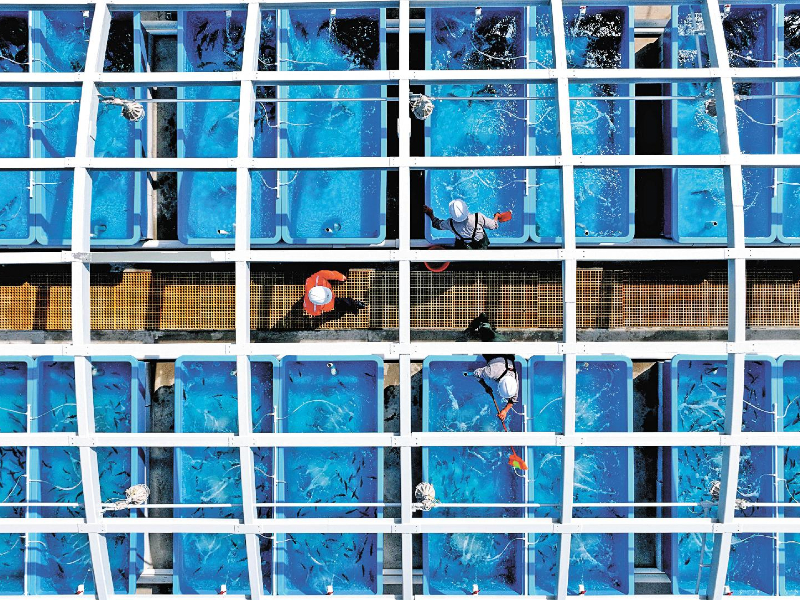

As China’s first demonstration project of liquefied natural gas (LNG) cold energy aquaculture, China National Offshore Oil Corp. (CNOOC) Guangdong Dapeng LNG terminal in eastern Shenzhen has officially started aquatic cultivation.
Delicious seafood such as red fish, lobsters, and abalones, commonly found on dining tables, are now expected to be produced at the base in Dapeng, with an estimated annual output of up to 50,000 kilograms.
It marks a new step in the construction of modern “ocean ranches” in domestic LNG industry.

Staffers work around aquaculture ponds in the China National Offshore Oil Corp. (CNOOC) Guangdong Dapeng LNG terminal in Dapeng New Area in eastern Shenzhen. The terminal has officially begun aquatic cultivation. Wang Xiaoke
The terminal is one of the largest LNG receiving stations in China.
During LNG vaporization and distribution, a huge amount of cold energy is produced. In 2023, the Dapeng station’s cold energy processing exceeded 8 million tons, and discharging such a huge amount of cold energy directly would result in significant energy waste. CNOOC innovatively decided to utilize the cold energy resources generated from the process by constructing a modern cold energy aquaculture area within the station, integrating green energy with aquaculture.
The cold energy aquaculture area resembles a marine aquarium, with lobsters, groupers, and other fish swimming in the cold water, while technical personnel monitor and record the water temperature and quality in the aquaculture ponds.
According to Hao Yunfeng, president of CNOOC Guangdong Dapeng LNG Co. Ltd., after the LNG exchanges heat with seawater, the seawater temperature drops by about 5 degrees Celsius, generally staying between 15 and 25 degrees Celsius according to different seasons, which becomes a scarce cold water resource in the southern sea area and is very suitable for the growth of high-value fish.
In order to fully utilize this valuable cold seawater that would otherwise be discharged, the Dapeng LNG receiving station has successfully achieved cold energy aquaculture through continuous exploration.
Utilizing the cooling water for fish farming serves as a pioneering model of green development. It’s estimated that cooling down 5 degrees Celsius per 1 cubic meter of seawater would consume 5.8 kilowatts of energy. By utilizing such cold water for aquatic cultivation, the terminal is projected to save 1.97 million kilowatt hours of electricity and reduce carbon dioxide emissions by 1,800 tons annually.
Cao Yueming, secretary-general of the Seed Branch of the Shenzhen Fisheries Industry Association, said the economic benefits of the trial project are considerable. The market price of the high-value marine products being cultivated is over 100 yuan per 500 grams, and the cost can be reduced by 30% compared with traditional aquaculture.